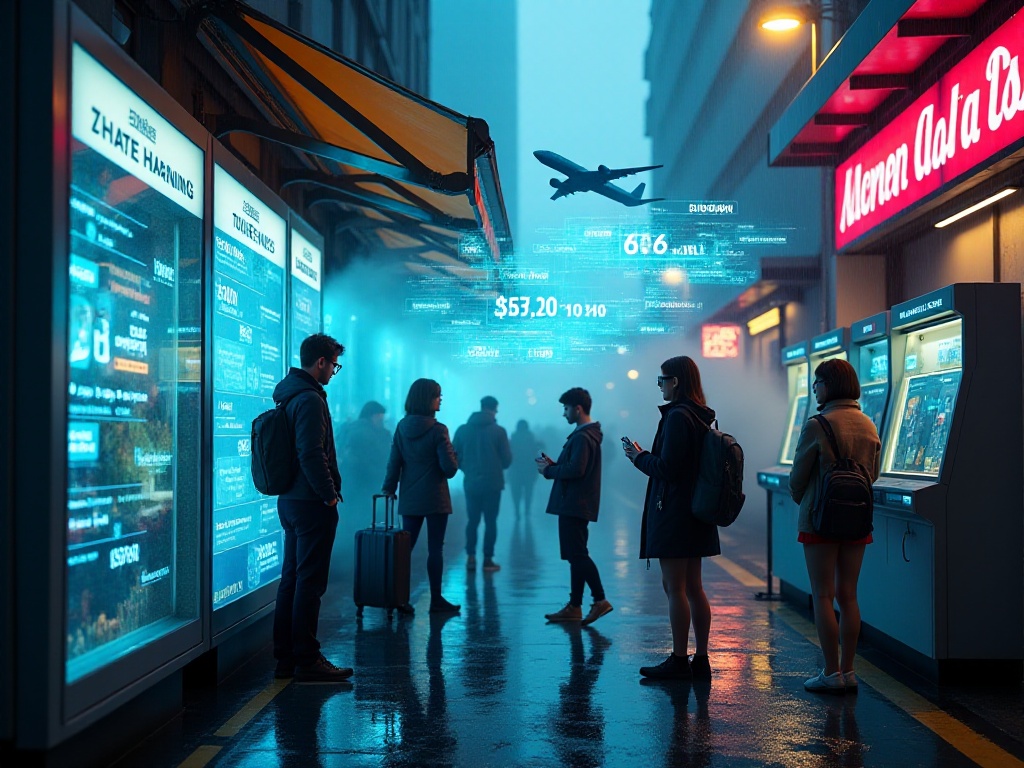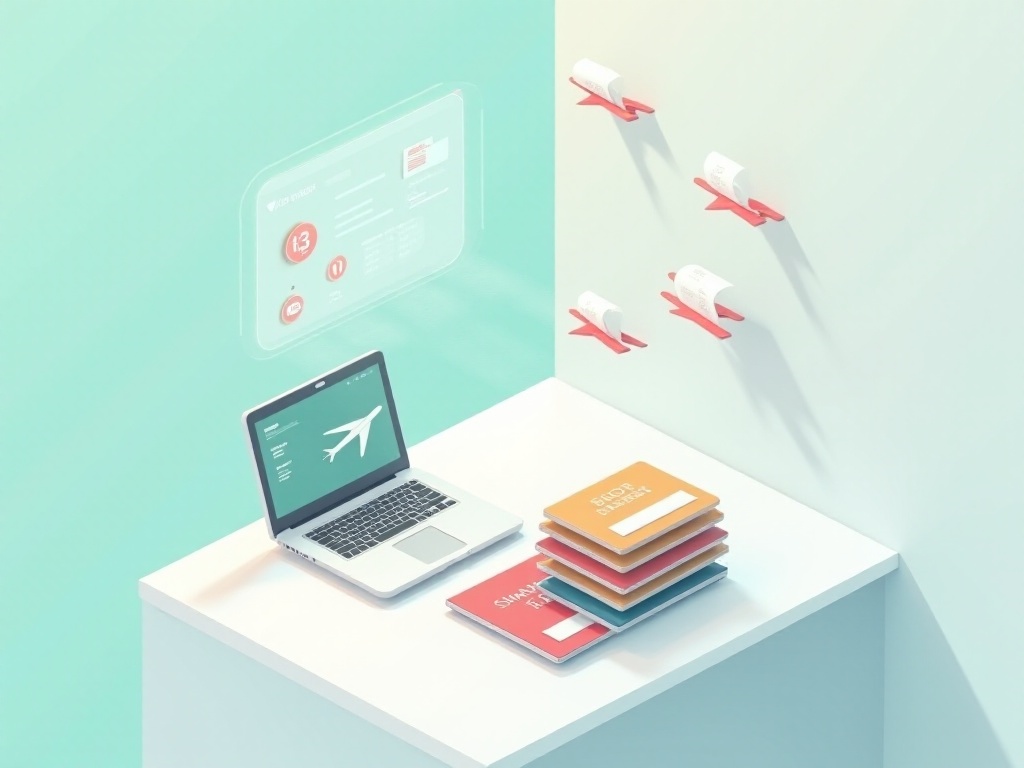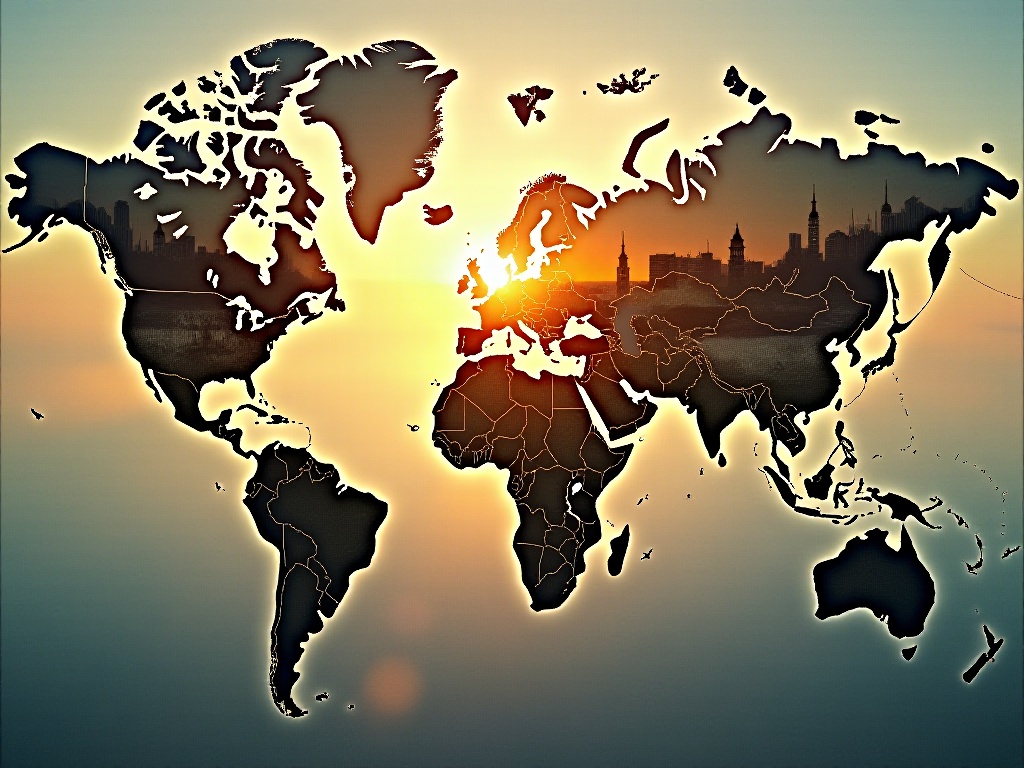Travel Anxiety
Whenever I discuss international travel with friends, budget is always their primary concern. Whether on WeChat Moments or Xiaohongshu, I constantly see questions about travel budgets. "How much money do I need for a week in Japan?" "How much will flights and accommodation cost in total?" These questions have become part of my daily social interactions. As someone who has been to Japan over ten times, I always have endless experiences to share when asked these questions. From initially being overwhelmed to now being completely at ease, I've learned so much along the way. Today, I'd like to share all the experience and insights I've accumulated over the years, hoping to help more people who want to travel to Japan.
The Art of Budgeting
I remember my first trip to Japan when I was a complete travel novice. I was so excited that I didn't think things through. As a result, poor budget planning forced me to return home early. It's really embarrassing to talk about - I had planned for ten days but realized by day seven that I was almost out of money. Standing outside Ginza Station, watching the crowds pass by, I wondered why no one had taught me how to plan a travel budget. That feeling was really awful, both scary and helpless.
Later, I started seriously studying travel budgeting, reading many guides and talking with experienced friends. Gradually, I developed my own method. Now before each trip, I make very detailed budget plans, calculating every possible expense clearly. This not only helps me stay informed during each trip but also helps avoid unnecessary anxiety.

Initial Preparation
Before starting to plan your budget, you need to ask yourself several questions: How many days do you plan to travel? Where do you want to go? What experiences do you want to have? These seemingly simple questions will directly affect your budget planning.
For example, if you only have 5 days, your itinerary needs to be relatively compact, and you might need to focus on just Osaka and Kyoto. But if you have 7 days or more, you can consider adding Nara or even Kobe. The length of time will directly affect your accommodation costs, transportation costs, and even attraction arrangements.
Travel purpose is also important. If you're an anime fan, you might want to spend more time in Nipponbashi and Akihabara; if you like history and culture, then Kyoto's temples and shrines are must-visit attractions; if you want to shop, you can't miss Shinsaibashi and Dotonbori. Different itineraries will bring different budget requirements.

Budget Framework
When it comes to specific budget planning, I usually divide travel expenses into three main categories: preparation costs before departure, expenses during travel, and emergency funds. This classification makes the entire budget clearer and easier to control.
First, preparation costs include visa fees, flights, and insurance. Visa fees are currently around 1,500 yuan and need to be processed at least a month in advance. Flight prices fluctuate greatly - during off-season, round-trip tickets might cost 7,000-8,000 yuan, while peak season prices could exceed 10,000 yuan. Therefore, it's recommended to start monitoring flight prices three to four months in advance and book when the time is right. Insurance is also mandatory, usually costing between 100-200 yuan for seven days.
Travel expenses mainly include accommodation, transportation, dining, admission tickets, and shopping. Accommodation costs range from 600-1,000 yuan per night, depending on the type and location. Transportation costs, if you buy the Kansai Pass, are about 15,000 yen for five days. A reasonable daily dining budget is 3,000-4,000 yen. For admission tickets and shopping, it depends on personal interests, but it's recommended to reserve about 30% of the total budget.
I usually set aside about 10% of the total budget for emergency funds. This money should be kept separately for unexpected situations. Once while shopping in Osaka, I didn't notice my credit card limit was insufficient, but thankfully had emergency funds to avoid an awkward situation.

Transportation Expenses
In the Kansai region, transportation costs are indeed a significant expense. Just getting from Kansai Airport to central Osaka offers several options. The fastest is the JR Express train at 1,230 yen; if you want to save money, you can choose the limousine bus for around 900 yen.
City transportation is also a considerable expense. Osaka metro starts at 180 yen and increases with distance. If you plan to move between multiple cities in the Kansai region, I strongly recommend buying the Kansai Pass. This pass allows unlimited rides on JR lines within designated areas and includes discounts for some attractions.
Last winter, I managed to keep my five-day transportation costs within 15,000 yen using a Kansai Pass. My itinerary was Osaka-Kyoto-Nara-Osaka, and I saved a lot just on inter-city travel. However, note that the Kansai Pass only works for JR lines, not subways or private railways. So it's best to plan your route beforehand to see if it's worth it.
Another money-saving tip is to arrange attractions in the same area for the same day when possible. For example, in Kyoto, Kiyomizu Temple, Gion, and Hanamikoji are all in the Higashiyama district and can be reached on foot, saving on transportation costs.

Accommodation Choices
When it comes to accommodation in Japan, many people's first reaction is "extremely expensive." But if you know how to choose, you can find highly cost-effective places to stay. The key is to master several accommodation selection techniques.
First is location choice. In Osaka, I most recommend staying near Nipponbashi, Namba, or Umeda. These areas have convenient transportation, complete surrounding facilities, and are lively at night. During my most recent trip to Osaka, I booked a guest house near Nipponbashi for only 4,500 yen per night. Although the room wasn't large, it had complete facilities and an excellent location, within walking distance to Kuromon Market and Dotonbori.
Second is choosing the type of accommodation. Besides traditional hotels, you can consider guest houses, capsule hotels, or hostels. If traveling with friends, sharing a room can significantly reduce accommodation costs. Once, when I stayed at a guest house with three friends, splitting the cost came to just over 2,000 yen per person per night.
Booking timing is also crucial. It's recommended to start monitoring room prices at least two to three months in advance. Japanese accommodation prices fluctuate greatly, with peak season prices potentially double those of off-season. Many good value rooms get booked up early. I usually compare prices across several booking sites, as the price differences can be quite significant.
It's also important to check the specific room conditions. Rooms in Japan are generally small but well-equipped. Some rooms that seem cheap might not have private bathrooms or might be in very remote locations, so these factors need to be considered in advance. Personally, I care about having a washing machine, as it allows me to pack less clothes and is necessary for longer stays.
Meal Planning
Honestly, eating in Japan isn't expensive - the key is knowing where to eat. Many people think Japanese dining is expensive because they don't know the tricks. If you're willing to put in some effort, you can enjoy delicious Japanese cuisine at very reasonable prices.
For breakfast, I usually go to convenience stores. Japanese convenience store food is reliable and varied. An onigiri costs 200-500 yen, and with coffee or tea, 500-800 yen can get you a filling meal. If there's a bakery near your accommodation, that's even better. Japanese bakeries have special morning prices, and their bread quality is excellent.
For lunch, I usually choose chain restaurants or food courts in shopping malls. Chain stores like Matsuya or Yoshinoya offer basic sets for just 500-800 yen. Mall food courts are also a good choice, with decent set meals around 1,000 yen. If you want ramen, going at lunch helps avoid evening queues, and some shops have lunch specials.
For dinner, I choose specialty restaurants, as you can't just eat cheap food in Japan. But not every dinner needs to be extravagant - I usually pick two or three days for nice meals and find izakayas or BBQ places other times. Izakayas have great atmosphere, and many offer single-person sets where 2,000-3,000 yen gets you drinks and snacks.
This way, controlling daily food expenses to around 3,000 yen is completely doable. Japanese food quality is generally reliable, even at cheaper places. However, note that some popular or Michelin-starred restaurants require advance reservations and are much more expensive. If on a limited budget, limit these high-end restaurants to one or two meals.
Activities
When visiting the Kansai region, there are some experiences you shouldn't miss. However, admission fees are indeed a significant expense, so advance planning is necessary.
Universal Studios Japan tickets are 7,800 yen, and if you want to make the most of your visit, Express Passes are essential but expensive. It's recommended to check crowd predictions on the official website or app beforehand and choose less crowded weekdays. You can also consider afternoon tickets, which are cheaper.
Osaka Aquarium tickets are 2,300 yen, and you can save money by booking online, where discounts are sometimes available. The Tempozan Ferris wheel next to the aquarium is also worth riding, offering views of Osaka Port for 700 yen.
Kyoto temples generally charge admission fees, but they're not too expensive. Kiyomizu Temple is 400 yen, Golden Pavilion 500 yen, and Silver Pavilion 500 yen. If you plan to visit multiple temples, consider buying a Kyoto sightseeing day pass or bus day pass to save money.
These costs may seem significant, but they're worthwhile investments. Each attraction has its unique charm and helps you better understand Kansai's culture and history. I suggest listing the places you want to visit and then prioritizing based on budget and time. Some attractions might be expensive but offer unique experiences worth the price; others might seem cheap but require significant transportation costs to reach.
Real-time Expense Tracking
Maintaining expense tracking habits during travel is especially important. I now use a phone app to record expenses immediately after spending. This helps monitor budget usage in real-time and summarize experiences afterward.
I categorize expenses into transportation, dining, shopping, etc. Every night before bed, I check the day's expenses, and if I notice overspending in any category, I adjust future plans accordingly. Last time in Osaka, through real-time tracking, I noticed I'd overspent on shopping, so I reduced my dining budget for the following days and still stayed within the total budget.
Expense tracking also helps understand your spending habits. For example, I discovered I often spend too much on afternoon tea, so I now specifically control this expense. Tracking also helps identify areas for optimization, providing reference for future trips.
Money-saving Tips
Choosing the right timing is crucial for saving money. I usually travel during off-season, avoiding Japan's Golden Week, summer vacation, and New Year period. This way, flights and accommodation can be about a third cheaper, and attractions are less crowded.
Advance planning can save a lot of money. It's best to book flights three months ahead when prices are reasonable and flight choices are plentiful. For accommodation, I usually start looking two to three months in advance to find good value rooms.
In Japan, student IDs are great money-savers. Many attractions and shopping centers offer student discounts, some even special international student rates. So if you're a student, remember to bring your student ID.
Coupons are also helpful for saving money. Stores like Don Quijote often issue coupons, which can be found on their official website or app. Some department stores also offer special discounts for foreign tourists - remember to show your passport.
For shopping, I've found many items are cheaper in the Kansai region than in Tokyo. You can use price comparison apps to find the best deals. For tax-free shopping, it's better to buy more at one store to reach the tax-free threshold at once.

Experience Summary
Through years of experience, I've found that a budget of around 30,000 yuan is appropriate for a 7-day Kansai trip. This budget allows you to experience Kansai's essence without feeling too constrained. Of course, specific expenses should be adjusted according to personal travel style.
Some people prefer luxury hotels, while others just need a place to sleep; some must eat at Michelin restaurants, while others enjoy convenience store bentos; some buy lots of souvenirs, while others focus more on experiences. So the most important thing is finding a budget plan that suits you.
I think the most important aspect of travel isn't how much you spend, but whether you enjoy yourself. Reasonable budget planning can make your travel more relaxed and enjoyable, without constantly worrying about money. I hope these experiences help those planning to travel to Kansai - have a great trip!
What do you think about this budget plan? Feel free to share your thoughts and experiences in the comments. If you have other questions about traveling in Japan, you can also let me know, and we can discuss them together.


